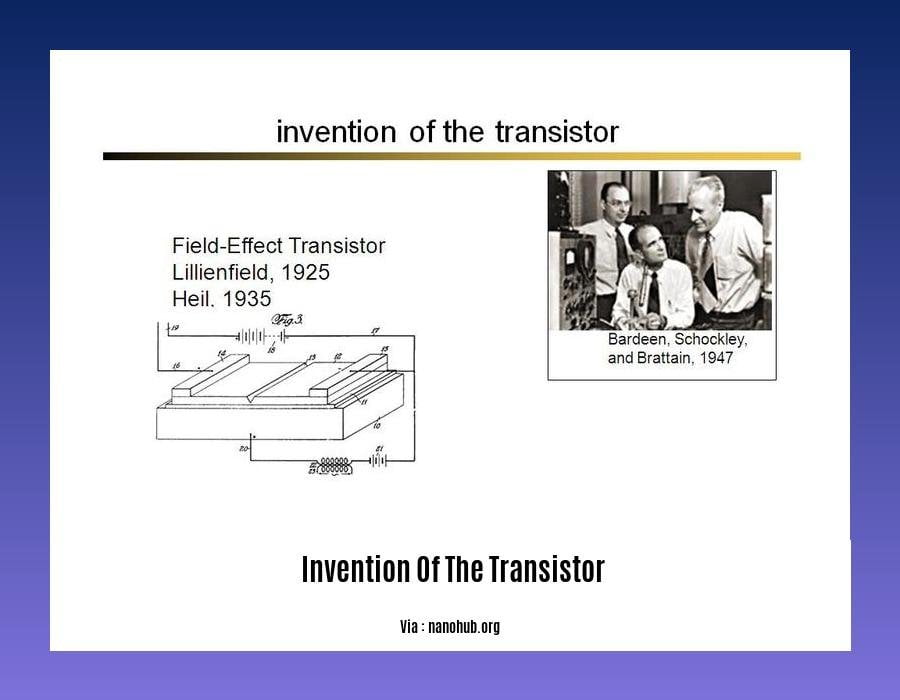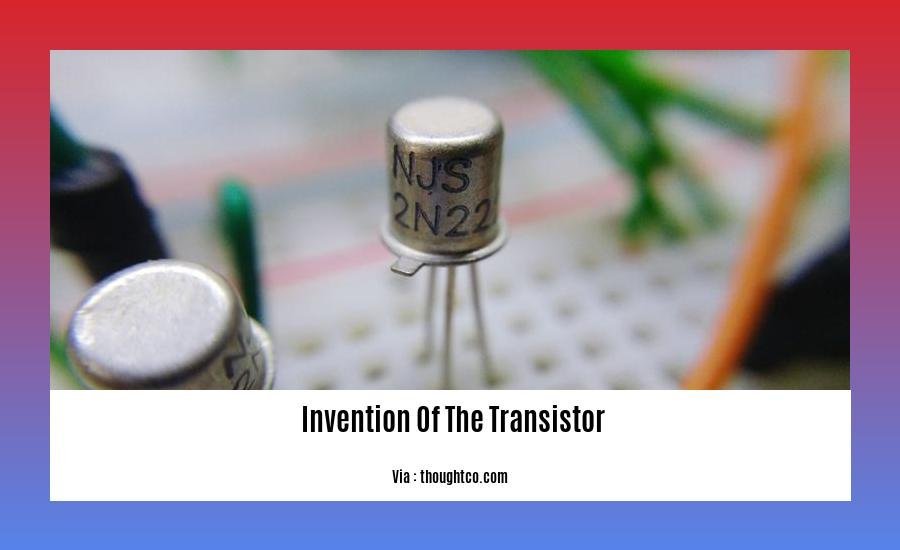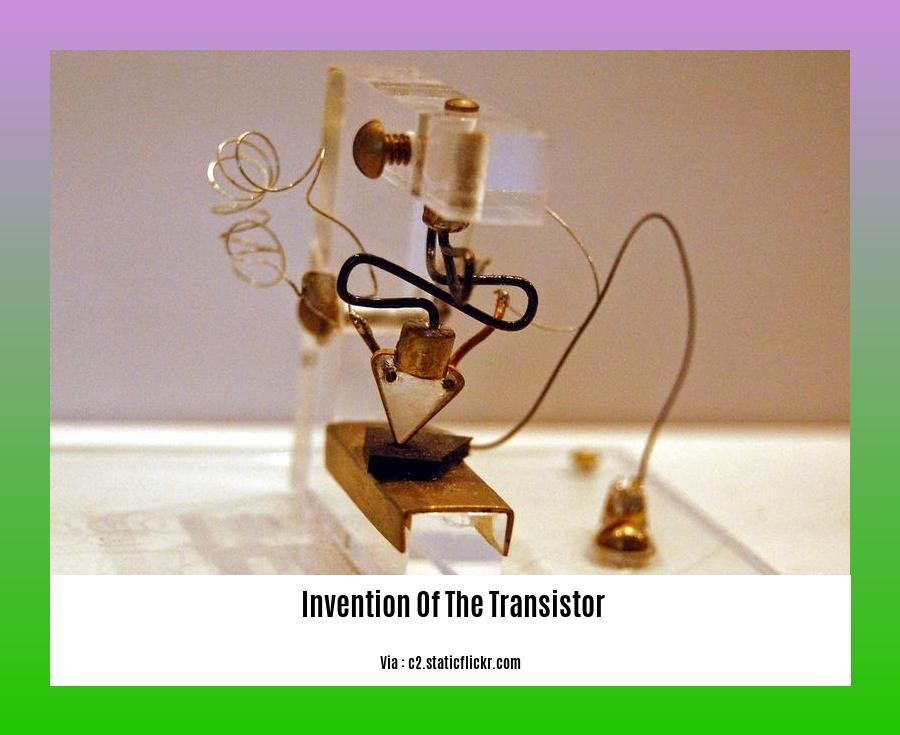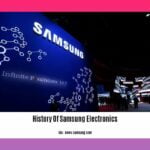Step into the annals of technological marvels with [- The Invention of the Transistor: A Pivotal Moment in Electronics History], a journey that unveils the extraordinary tale behind the invention that revolutionized the world of electronics.
Key Takeaways:
- John Bardeen and Walter Brattain invented the first transistor in 1947.
- The invention of the transistor led to the miniaturization and efficiency of electronic devices.
- The junction transistor, invented by William Shockley in 1951, was more robust than the point-contact transistor.
- The first commercial application of transistors was in Sonotone hearing aids (1952).
- The Regency TR1 became the first transistor radio (1954).
- Bardeen, Brattain, and Shockley won the Nobel Prize in Physics in 1956 for their work on the transistor.
The Invention of the Transistor:

In a time where vacuum tubes dominated the electronics world, a pivotal moment emerged in the annals of technology: the invention of the transistor. This groundbreaking device paved the way for miniaturization, revolutionizing countless industries forever.
The year was 1947 when the transistor was born at Bell Labs, a testament to the brilliance of John Bardeen, Walter Brattain, and William Shockley. The first transistor, the point-contact transistor, was a pivotal leap from vacuum tubes. By 1951, Shockley introduced the more practical junction transistor, ushering in a new era of innovation.
The transistor found its first commercial application in 1952, powering Sonotone hearing aids. Its impact extended to a broader audience in 1954 with the introduction of the Regency TR1, the first transistor radio. This portable device showcased the transistor’s potential to transform daily life.
In 1956, Bardeen, Brattain, and Shockley received the Nobel Prize in Physics for their revolutionary invention of the transistor. This accolade cemented their legacy as pioneers of the electronics revolution.
Craving insights into the evolution of computing devices? Delve into our comprehensive article on the history of computers to unravel the fascinating journey from mechanical marvels to today’s digital realm.
Curious about the genesis of calculation? Explore our in-depth analysis of mechanical calculating devices that paved the way for modern computing.
Witness the groundbreaking era of personal computing in our detailed account of its rise. Discover how visionary minds transformed computing from an exclusive domain to an accessible tool empowering individuals.
The Junction Transistor: A Revolutionary Advancement
The junction transistor, invented by William Shockley in 1951, was a pivotal step in the history of electronics. It replaced bulky and inefficient vacuum tubes, shaping modern electronics as we know it.
Key Takeaways:
- Improved Transistor Design: Shockley’s “sandwiches” of N- and P-type germanium enhanced transistor performance.
- Nobel Prize Recognition: In 1956, Shockley, John Bardeen, and Walter Brattain were awarded the Nobel Prize in Physics for their invention.
- First Commercial Application: Transistors debuted in 1952 in Sonotone hearing aids.
- Understanding and Advancement: The junction transistor completed our understanding of how transistors work, unlocking further electronic developments.
- Electronic Revolution: Within a decade, the transistor transformed modern electronics and research institutes.
This breakthrough paved the way for miniaturization, increased computing power, and countless technological advancements shaping our world today.
Citations:
- The transistor revolution: How transistors changed the world
- How the First Transistor Worked – IEEE Spectrum
Transistor Miniaturization and the Rise of Integrated Circuits

Imagine a world without transistors, no computers, no smartphones, no portable electronics. Transistor Miniaturization and the Rise of Integrated Circuits revolutionized modern technology and paved the way for the digital age.
Evolution of Transistor Design
The invention of the transistor in 1947 marked a paradigm shift in electronics. The point-contact transistor, the first of its kind, evolved into the more efficient junction transistor in 1951. This miniaturized version opened up new possibilities for circuit design.
Moore’s Law and Transistor Density
In 1965, Gordon Moore observed that the number of transistors on a computer chip doubled about every 18 months—a trend known as Moore’s Law. This relentless miniaturization fueled the exponential growth of computing power and the development of complex integrated circuits.
Benefits of Transistor Miniaturization
Transistor miniaturization offered several advantages:
- Reduced size and weight of electronic devices
- Lower power consumption
- Improved performance and speed due to shorter channel lengths
- Cost-effectiveness due to mass production
Emergence of Integrated Circuits
The miniaturization of transistors made it possible to pack multiple transistors and other electronic components onto a single chip, forming integrated circuits (ICs). ICs revolutionized electronics by enabling the creation of compact, efficient, and affordable electronic systems.
Key Takeaways:
- The invention of the transistor in 1947 marked the beginning of device miniaturization.
- Moore’s Law predicted the doubling of transistor density каждые 18 months.
- Transistor miniaturization facilitated the development of integrated circuits.
- The rise of integrated circuits fueled the exponential growth of computing power and miniaturization of electronic devices.
Relevant URL Sources:
- IEEE Electron Devices Society: Invention of the Transistor 75 Years Ago:
- Britannica: Transistor – Miniaturization, Semiconductor, Electronics:
The Legacy and Impact of Transistor Technology
The invention of the transistor in 1947 revolutionized electronics and laid the foundation for modern technology. This tiny semiconductor device acts as a switch, controlling the flow of electricity, and has become the building block of all modern electronic devices.
Key Takeaways:
- The transistor replaced bulky vacuum tubes, shrinking the size and improving the efficiency of electronic devices.
- It enabled the development of integrated circuits, microprocessors, and memory chips, leading to the miniaturization and affordability of electronics.
- The transistor fueled the digital revolution, making computers, smartphones, and the internet possible.
- It transformed industries such as communication, healthcare, transportation, and manufacturing.
- The invention of the transistor earned John Bardeen, Walter Brattain, and William Shockley the Nobel Prize in Physics in 1956.
Innovations and Applications
The invention of the transistor sparked a flurry of innovation and applications. In the early 1950s, the first commercial transistors were used in hearing aids, followed by transistor radios, calculators, and computers. The development of the integrated circuit (IC) in the late 1950s miniaturized electronic circuits, enabling the production of smaller, more powerful, and more affordable devices.
Today, transistors are found in almost every modern electronic device, from smartphones to satellites. They are used in amplifiers, switches, logic gates, and memory elements, enabling the complex operations that power our digital world.
Conclusion
The transistor is a testament to the power of human ingenuity and a symbol of the progress that can be achieved through scientific discovery. Its legacy is evident in the countless technologies that have shaped modern society, and its impact will continue to inspire future generations of innovators.
Citations:
- IEEE Xplore: The Invention of the Transistor
- How Transistors Changed the World Over 75 Years | Popular Science
FAQ
Q1: How did the invention of the transistor revolutionize electronics?
Q2: Who was primarily responsible for the invention of the transistor?
Q3: When and where was the first transistor invented?
Q4: How did the junction transistor improve upon the point-contact transistor?
Q5: When and for what application was the transistor first used commercially?
- SYBAU See You Baby Meaning: Gen Z Slang Evolves - July 1, 2025
- Unlock Your Inner Youth: Lifestyle Secrets for a Vibrant Life - July 1, 2025
- Decode SYBAU Meaning: Gen Z Slang Explained - July 1, 2025



![A Journey Through the History of Computing: From Its Humble Origins to Modern Innovations [history of computing ss1] history-of-computing-ss1_2](https://www.lolaapp.com/wp-content/uploads/2023/12/history-of-computing-ss1_2-150x150.jpg)


